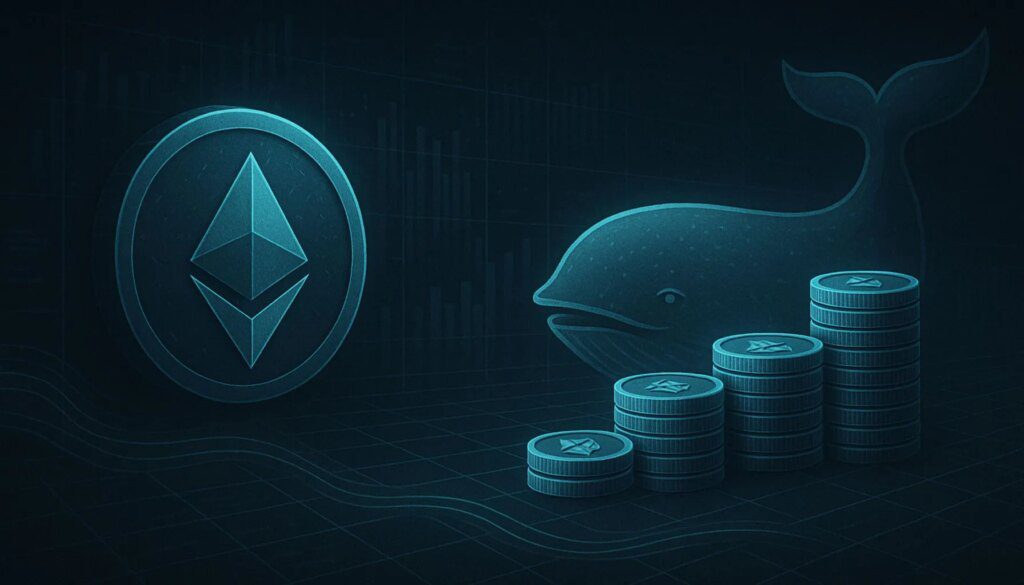Ethereum has entered a consolidation phase after a turbulent period of selling pressure driven by macroeconomic uncertainty and market fear regarding the US government shutdown. Over the past week, Ethereum price has stabilized around the $3,500 level after briefly falling below key supports, as traders and institutions reassess risk exposure in the crypto market.
Related reading
Despite the cautious sentiment, on-chain data reveals a mixed story: large holders, or “whales,” are quietly accumulating ETH during the downturn. According to data from Lookonchain and CryptoQuant, several high-value wallets have significantly increased their positions in Ethereum, signaling growing long-term investor confidence even as overall market momentum slows.
This accumulation phase suggests that sophisticated players view current price levels as an opportunity rather than a sign of broader weakness. Historically, similar patterns of whale buying during periods of macroeconomic uncertainty have preceded periods of recovery and renewed market strength.
Whale Activity Suggests Strategic Accumulation Despite Market Uncertainty
According to Lookonchain data, a whale known for its aggressive accumulation of Ethereum just purchased an additional 30,548 ETH ($105.36 million) in the last hour. The move brings its total acquisitions since November 4 to an astonishing 385,718 ETH, worth approximately $1.33 billion.
Notably, approximately $270 million of the funds used for these purchases were borrowed from decentralized lending platform Aave, highlighting high leverage but strategic positioning.

This type of activity often demonstrates strong institutional confidence in Ethereum’s medium-term prospects. Borrowing large sums to accumulate ETH indicates that the whale expects price appreciation large enough to offset borrowing costs and volatility risks. This also reflects the growing demand for exposure to Ethereum in decentralized finance (DeFi), where whales use platforms like Aave to maximize capital efficiency.
Such large-scale purchases can have multiple implications: they absorb available liquidity in the market, strengthen areas of psychological support, and can trigger a change in sentiment among retail investors who interpret this move as bullish. However, this also introduces potential short-term risk: if prices continue to correct, leveraged positions could amplify volatility.
Overall, the data points to renewed accumulation momentum, suggesting that sophisticated market participants are positioning themselves for Ethereum’s next major move.
Related reading
The bulls try to regain their momentum
Ethereum (ETH) is currently showing signs of stabilization after weeks of intense selling pressure, trading around $3,479 at the time of writing. The daily chart shows ETH holding just above the 200-day moving average (red line) – a key long-term support level that has historically served as a starting point for bullish rallies.

After falling below $3,200 earlier in the week, Ethereum rebounded strongly, supported by further whale accumulation and improving market sentiment. However, the 50-day (blue) and 100-day (green) moving averages remain above the current price, indicating that the short-term trend is still moving downward. For bulls to regain control, ETH must close decisively above $3,650 to $3,700, where a confluence of resistance lies.
Related reading
Volume data suggests that selling pressure is gradually fading, but momentum remains weak. If Ethereum fails to hold the $3,400-$3,450 zone, the next major support lies around $3,200. On the positive side, returning to the $3,700 mark could open the door for a recovery towards $4,000.
Overall, Ethereum appears to be in a consolidation phase, with large holders accumulating while retail traders remain cautious – a structure that often precedes stronger directional movement.
Featured image from ChatGPT, chart from TradingView.com




